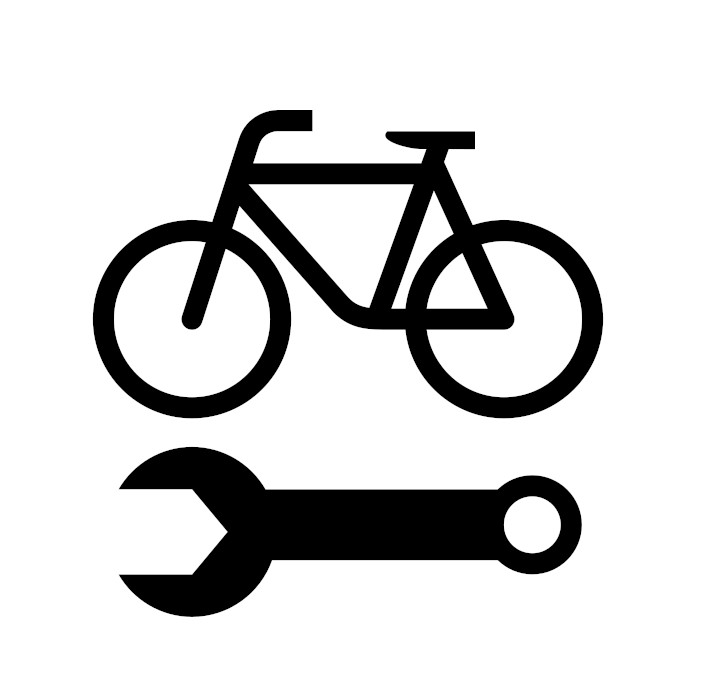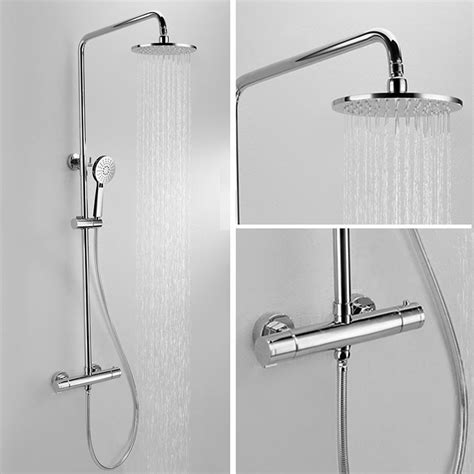

I don’t have one yet. But I would love to play with using it as a radio pager.


I don’t have one yet. But I would love to play with using it as a radio pager.

I’d rather see mods have less power not more
I would rather see mods have use less power, not more.
When you give them blunt instruments, you encourage excessive use of power. When you give them only an AK-47, they will use that to cut the head off a chicken rather than a machete (as you withheld the machete as it would be too empowering).


The metadata in the headers can be avoided using Memoryhole and similar protocols which embed the headers inside the encrypted payload. The problem is again barrier to entry. Low-tech users generally can’t even handle app installs on desktops.
When you say “worry”, that’s not the right word for it. My boycott against Google is not fear-driven. I will not feed Google anything it can profit from as an ethical stance. Even if an expert linux tor user were on Google, I’m not sure we could exchange email in a way that ensures Google gets no profitable data. If we use PGP coupled with Memoryhole to strip out the headers, I’m not sure Google would accept a msg with a missing or bogus From: header. But if so, Google still possibly learns the user’s timezone. Though that may be useless if Google learns nothing else about that user. But we’re talking obscure corner cases at this point. Such an expert user would have no Google dependency anyway.
MS/google-dependent friends are generally extremely low-tech. They don’t know the difference between Firefox and the Internet. They don’t know the difference between Wi-Fi and Internet. Linux – what’s linux? They would say. At best, they just think of it as a mysterious nerd tool to be avoided. So what can I do wholly on my end to reach them via gmail without Google getting a shred of profitable data? Nothing really. So I just don’t connect directly with a large segment of friends and family. Some of them are probably no longer reachable. Some are in touch with people who connect to me via XMPP, so sometimes info/msgs get proxied through the few XMPP users. It’s still a shitshow because Google still gets fed through that proxied inner circle of friends and family. In the past when someone needed to reach me directly, they would create a Hushmail or Protonmail mail account for that temporary purpose (like coordinating a trip somewhere). But that option is mostly dead.
I just had to reach out to plumbers for quotes. All of them are gmail-served. All I could do is refuse to share my email address and push them to use analog mechanisms. They are not hungry enough for business to alter their online workflow or create protonmail accounts.


That’s exactly what I did with hushmail. I would tell low-tech folks to get a hushmail account then I would use hushtools.com to do all the key management, putting my key on the keyring and grabbing their key. So the other person did not need to know anything or take any special steps. That was best option of my time. But last time I checked hushmail was still entirely non-gratis.
Protonmail emerged when HM became non-gratis and messed with hushtools. But PM requires every one of their own users to do key management which creates a barrier to entry. I would have to walk a PM user through adding my key to my record in their address book and walk them through sending me their key. That effort is a show stopper for many. I might as well walk them through setting up a PGP-capable MUA. But then if they keep their gmail or MS acct the metadata still feeds those corps.


I give out my XMPP address and offer Snikket accounts. Some go along with it and some do not. I lost touch with some friends. Some people are in contact via phone but that’s not ideal some connections are lost as phone numbers change.
I used to push some people toward Hushmail until they dropped the gratis plans. Then for a while I pressured people onto Protonmail but then distanced myself from PM when the brought in Google reCAPTCHAs and killed off Hydroxide. Tuta is a non-starter because Tuta’s variety of e2ee is incompatible with open standards, thus forcing me to periodically login to a web UI (also due to them sabotaging their Android app by way of forced obsolescence pushed in the most incompetent way).
So it’s a shitty state of affairs. 2024 and simply sending a msg to someone has become a total shitshow.


I refuse to fund my oppressors
Bingo. I live by this philosophy.
Although more precisely: I refuse to fund feed my oppressors. The reason for s/fund/feed/ swap is that our oppressors profit from our data too. So e.g. I won’t even email a gmail user because my data would then feed Google (an oppressor because of how they dictate e-mail terms among other oppressions).


You want to open the hot valve 100% until the hot water comes because it conserves water. You want to clear out the hot water line as fast as possible. Turning it to 70% just takes longer to heat up and you’re just dumping cold water out for no reason.
This is precisely what a thermostatic valve gives you. I don’t think you know how a thermostatic valve works. If the thermostat on the mixer bar is set at 38°C and you turn on the pressure control when the water in the hot line is cold, a thermostatic valve opens the hot 100% immediately and when the hot water arrives at the fixture it automatically adjusts. What you say about starting 70% open is exactly the problem you have when /not/ using a thermostatic valve, like the pressure balance valves that are common in the US.
(edit) also consider how tankless heaters have a minimum threshold for turning on. If you open the hot valve just a little, the heater will not be triggered. It must be open enough to trip the flow switch. It can be tricky to open the valve just enough to trigger the heat. A thermostatic mixer valve solves that.
Even a couple of dollars more for a contractor is a lot when a thermostatic valve doesn’t add any value.
I don’t think you saw the pic I posted of the cheap thermostatic mixer bar. Those can be installed by anyone because they are external. You just turn two union nuts until hand-tight then give ¾ turn extra with a wrench.


The bolts use a plastic washer and plastic nuts that slide into plastic rails of the plastic cistern. It’s really flimsy. As I tighten the nuts, I can hear the cracking sound of the plastic washers cracking internally. I’ve reinforced them with a bit of thin sheet metal but whatever I do cannot rely on bolts to add much pressure. This is also why I kind of doubt a rubber flanged gasket working even if I could track one down.
But indeed using all gummy stuff would likely work (but messy!). I’ll try it if my next plan fails.


In US the most common type of seal is a wax ring.
I’ve seen those used between the toilet and the floor on US toilets. I didn’t know they also used them between the cistern and bowl. That might work here but finding one locally seems unlikely but I’ll have to look anyway.
But everything needs to be extremely rigid, any movement later will break the seal.
Well, cistern is plastic and flimsy so maybe it wouldn’t work. I’m also thinking the hard rubber gaskets might only work well for a heavy ceramic cistern.
I appreciate all the recycling tips. People around here just use them to decorate street corners without cleaning them up first. I never see them getting dumped, so I guess the city porcelain beautification project must be happening late at night.
One practical use I might consider is for the parking competition. Sometimes people try to reserve street parking by putting junk on the street in front of their house until they need to park. A heavy old ceramic toilet might work well for that as probably no one else would want to touch it to take a parking spot.


I just removed the cistern for like the 6th or so time to inspect. The gummy stuff appears to adhere very well to both the ceramic and the foam. I would be quite surprised if the water were getting between them. I suspect the most likely theory now is water goes between the foam and the cistern and over top the foam. To test this, I guess I will cut out a paper ring and place that on top of the foam and see if part of the paper gets wet. If the paper gets wet, then I’m thinking I will wrap electrical tape around the cistern down spout to widen it a bit, to get a tighter fit in the foam ring, and maybe put 1 strand of jute (rope) under the electrical tape near the top. And if that fails I guess i will put some of the gummy stuff on the top of the foam, though that will make for a mess everytime the cistern needs to be removed.


It’s bizarre that thermostatic mixers are costly in the US. I can get a new one as cheap as €25 if I shop out the sales, or probably €10 2nd hand.
Tankless water heaters are really lagging as well in the US, and absurdly costly. I’m sure that will get corrected eventually. But in Europe tankless boilers are the norm and used in combination with thermostatic mixers. The lack of tank causes a delay in hot water because it’s less instant than a pre-heated tank. The heating element takes time to fire and reach a high temp. So you are even more tempted to open the hot valve 100% until the hot water comes, which means you have to diligently readjust the valve to avoid scalding.
The luxury fix to that delay is to have a 3rd pipe that cycles the (cold) hot water line to keep it hot in the pipes. This seems quite wasteful and complex so I wouldn’t want to install that.


I’m riding in all seasons and often get caught in the rain. The chain has stopped slipping. So I’m not sure what was going on to cause slippage for a week or two but it corrected itself and so I’m still getting mileage out of it.


The thermostatic mixers can get as cheap as €25. Though I think the cheap ones have a degree of slippage, whereby mid-shower I have to increase temp. I don’t know if that’s because it lost track of my setting, or if I adjusted to the temp physiologically and need hotter water to psychologically feel the same level of heat.
What kind of bothers me about the pressure balance design is you cannot tell from the pics if it’s really pressure balanced. I think the one handle style goes back decades, and originally did not maintain a balance. You have a joystick of sorts but if the pressure on one pipe changes you don’t know if it internally balances to maintain the ratio. So you have to read the product description and trust it.


Yeah, kind of. I’m glad to hear they have that capability. But note that there are some non-thermostatic designs that come close to achieving the same effect. Those have a memory of sorts, where they know you want X volume of hot water and Y volume of cold water. Then if the pressure in one drops or increases, the valve will adjust the other line ensure the hot and cold have the same ratio regardless.
That’s pretty good. But it assumes the hot water and cold water are each at constant temps. So imagine if you get to near the end of a hot water tank supply, the hot water will gradually become colder. In that case, a thermostatic valve will open the hot even more to chase the temp you want. Whereas the pressure balance style will not. Perhaps more importantly, the pressure balance style does not counter the fact that the hot line will be initially cold since the hot water cooled down while sitting in the pipe. So you have to fiddle with readjustments until the hot pipe is maxed out.


You have two controls, 1 for temp and one for pressure (instead of the traditional hot and cold with independent pressure controls on each). The temp knob has a stop in one position as you turn it, which gives 38°C water. The cheaper models are external and use a wax cylinder inside:

Wax expands as it gets warm. So when you first add pressure, internally the hot water valve is 100% open. Then as the water gets hotter at the valve, it closes and starts letting cold water in to retain the temp you select. It reacts quite fast too, so even if you have screaming hot water arrive at the fixture it’s quick enough to protect you from scalding. You set it and forget it. If someone else in the house flushes a toilet or runs a washer or dishwasher, thus causing the cold water to lose pressure, the thermostatic fixture will automatically adjust to maintain the temp.
The pricier ones are internal, which means all the complex valves are buried in the wall. And instead of wax they use a bi-metallic mechanism (which exploits the fact that a couple diferent metals bend differently with temp, or something like that). They look like this:

I think that has 2 pressure knobs, one for rainfall and one for the wand.
Whole external kits with rainfall and wand start at €100. If you just want the mixer bar and wand, it can be as cheap as €25. The internal kits start at around €500. I like the external ones not just because they are cheaper, but the plumbing is simple. You just need to have hot and cold threaded ½" pipes sticking out of the wall 15cm apart, which the fixture can screw onto.


I appreciate the suggestion but that luxury option sounds way more complicated. Adding a thermostatic mixer under the sink needs no pump or electrical wiring, and does not need a third water pipe to go from the faucet back to the boiler. It’s just plumbing under the sink. And in my case, I happen to have spare thermostatic shower mixers so I would just be buying a couple fittings.
I would perhaps even sooner put a small electric tankless water heater under the sink, which would require just one water pipe rather than 3.
I think there’s even a compromise where an electric insti-heat gadget can be plugged into the hot water line to give instant hot water, which I assume shuts off when the hot water actually comes.


I’m afraid you misunderstood. The leak in all scenarios is in the same place - water enters a room two rooms over from the bathroom. It’s unclear whether it’s seeping in around the showerpan or walls.


That’s a different kind of leak. A leaky valve isn’t my issue. But indeed it is nice to have replaceable cartridges so when a valve goes bad it does not require digging up the wall and replumbing.


That’s hard to imagine. I would expect the plastic parts to withstand near boiling temps. The temp should drop some along the route. Often the the problem is people have their hot water tanks too low (to save energy), and then bacteria lives in the tank. So ideally the tank should be out of survivable range of most bacteria, and then showers should have a thermostatic mixer to prevent scalding. OTOH, if it’s a tankless boiler, you can probably get away with lower temps. So I would be tempted to conclude the cartridge you had was bad quality.
IRC for Android ← antithetical to privacy
IRC for linux PCs that can be hardened and routed over Tor ← privacy respecting
This thread does not belong here.